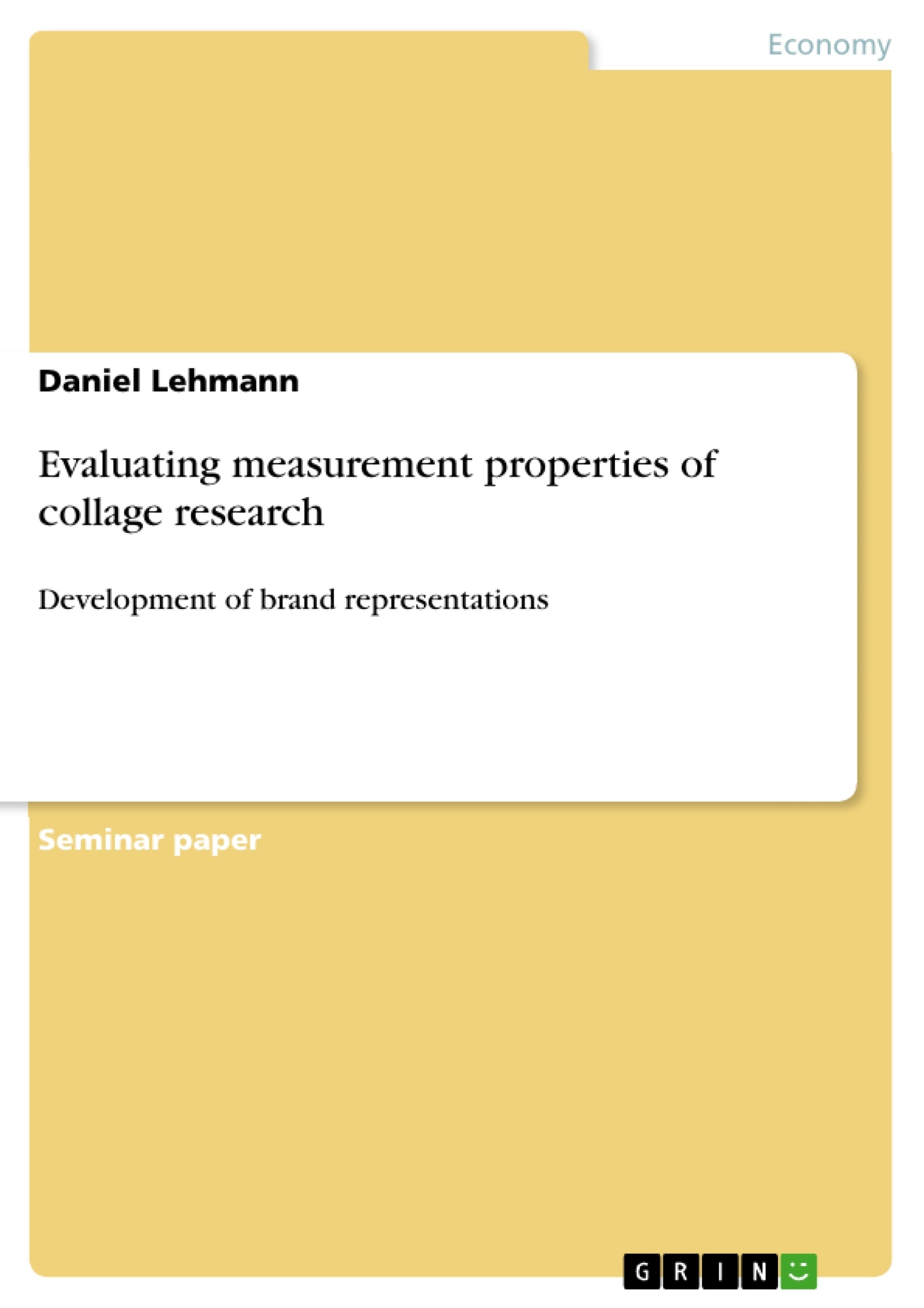This paper investigates the evaluation of the measurement properties of collage research. After a classification and an introduction about the qualitative and visual research, the collage technique is described. Different characteristics and aspects of a collage are shown.
Then, the classical measurement properties are explained in detail: Objectivity, reliability and validity. A conclusion is always pointed out of the results for the collage research. All in all, the classical measurement properties cannot be adapted simply to the collage technique. Finally, the most important issues are resumed and an outlook for further researches is taken.
The analysis is focused on expert literature like market research papers and different textbooks. The difficulty was to develop guidelines for the collage research based on the classical measurement properties. Besides, a discussion with a researcher enforced the results in a qualitative way. Finally the soundness of the findings is guaranteed due to the continuous review of the sources and the data.
Inhaltsverzeichnis (Table of Contents)
- Development of brand representations and collage research
- Collage research - Classification and definition
- Qualitative research
- Visual research
- Characteristics of the collage technique
- Measurement properties in general and evaluating measurement properties in collage research
- Objectivity
- Reliability
- Forms of obtaining reliability
- Conclusions for the collage research
- Validity
- Content validity
- Construct validity
- Criterion or instrumental validity
- Theoretical validity
- Consultative validity
- Conclusions for the collage research
- Subsumption and outlook
- References
Zielsetzung und Themenschwerpunkte (Objectives and Key Themes)
This paper examines the evaluation of measurement properties in collage research. The main objective is to analyze how traditional measurement properties, such as objectivity, reliability, and validity, can be applied to this visual research method. The paper focuses on the specific challenges of adapting these classical concepts to the unique characteristics of collage research.- The nature of qualitative research and its application in visual research
- The role of the collage technique in understanding brand representations
- Evaluating the measurement properties of collage research, including objectivity, reliability, and validity
- The limitations of applying traditional measurement properties to collage research
- The potential of collage research for further exploration in brand development and consumer understanding
Zusammenfassung der Kapitel (Chapter Summaries)
- Chapter 1 provides an overview of the increasing importance of collage research, particularly in understanding brand representations. It highlights the difficulty of traditional methods in capturing complex brand perceptions and suggests that collage research offers a valuable alternative, especially in cases where verbal expression is limited.
- Chapter 2 delves into the classification and definition of collage research. It explains how collage research falls under the umbrella of visual research, which itself is a form of qualitative research. The chapter discusses the strengths and limitations of qualitative research compared to quantitative research, focusing on its ability to uncover deeper motivations and provide realistic insights into human emotions.
- Chapter 3 examines the traditional measurement properties of objectivity, reliability, and validity in the context of collage research. It explores the challenges of applying these properties to a visual research method and analyzes the implications for data interpretation. The chapter concludes by emphasizing the need for careful consideration and specific adaptations when evaluating measurement properties in collage research.
- Chapter 4 summarizes the key findings and outlines future directions for research in this area. It acknowledges the limitations of current research and emphasizes the importance of further exploration to solidify the application of measurement properties in collage research.
Schlüsselwörter (Keywords)
This paper explores the evaluation of measurement properties in the context of collage research, focusing on the application of these properties in visual research methods. Key terms include qualitative research, visual research, collage technique, objectivity, reliability, validity, and brand representations. The paper examines the specific challenges and opportunities of applying these concepts to the unique characteristics of collage research.- Quote paper
- Daniel Lehmann (Author), 2006, Evaluating measurement properties of collage research, Munich, GRIN Verlag, https://www.grin.com/document/131168



